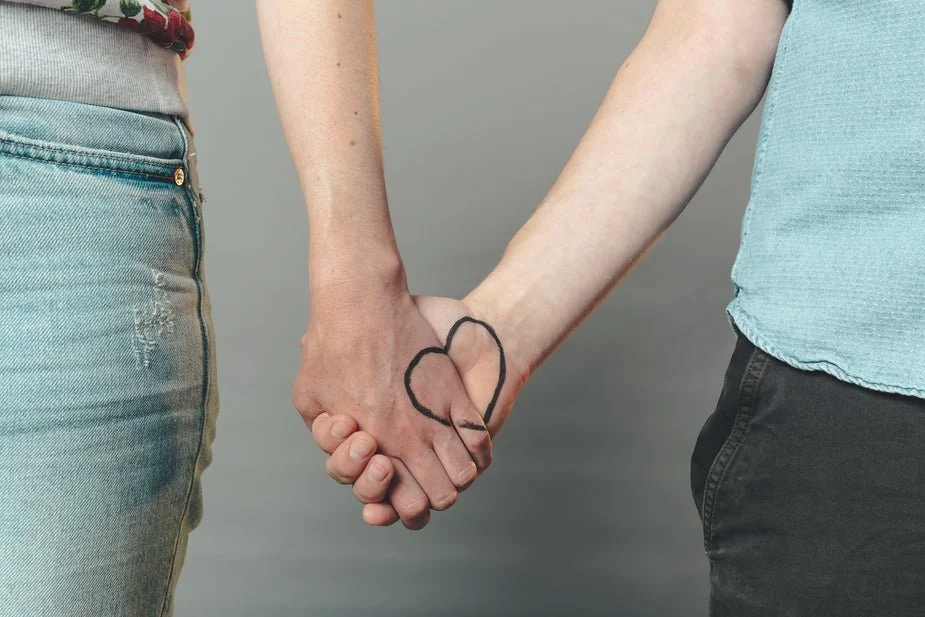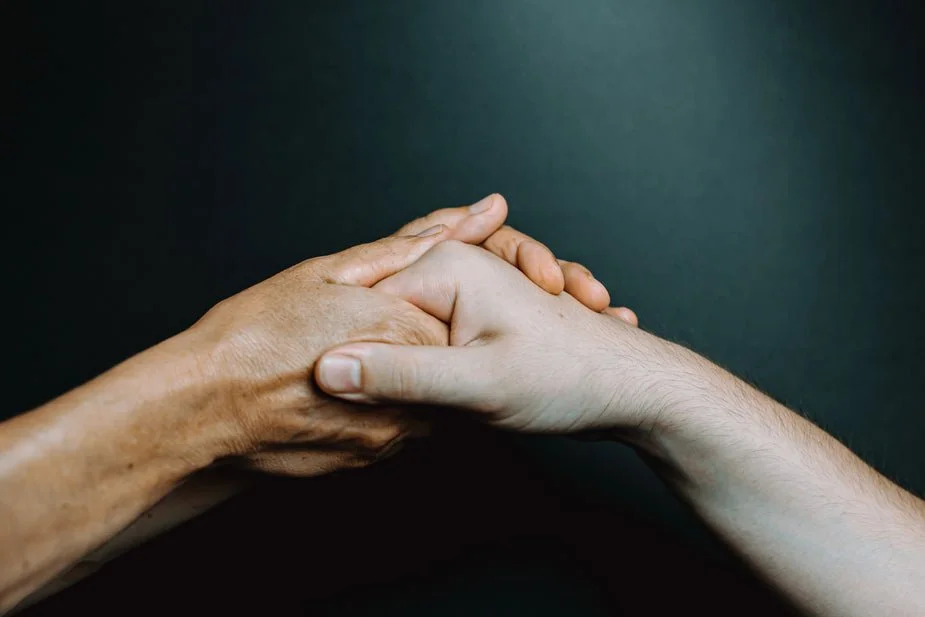Your Relationship, Your Story
When I started the research on gay male relationships for my master’s capstone, I didn’t expect it to reshape how I think about relationships overall. This paradigm shift I’ve personally been through applies not only to gay men, but to so many of us who have never quite seen ourselves reflected in the “traditional” story of how relationships are supposed to work. The deeper I delved into the literature on attachment theory, emotional safety, minority stress, and identity, the clearer one thing became: so many of the relationship scripts we inherited were never written to account for each of our individual uniqueness. And yet, we still end up trying to follow them.
When You’re Handed a Script That Doesn’t Fit
Most of us grow up unconsciously absorbing messages about what love should look like: how commitment should unfold, what roles we’re supposed to play, which needs are “acceptable”, and which ones we should hide away. These scripts often come from heteronormative, mononormative, and culturally dominant relationship models that we surround ourselves with and see every day in the media. These frameworks and oppressive systems shape everything from how we show up emotionally to how we measure the “success” of a relationship.
How many people are quick to say when a relationship ends “looks like they weren’t ‘the one’”. Why is that? Because the script is that you’re supposed to find “the one”, and every relationship that ends is then considered a failure. But what if you weren’t trying to find “the one”? What if you found someone wonderful, who was in your life for a set period of time, and it’s now ended and it was a beautiful (and potentially sad) ending? That doesn’t sound like a failure to me. As a dear friend once told me, that sounds like an astounding success.
My capstone focused specifically on gay male relationships, but I want to be clear: what I learned applies far beyond this group.
It applies to anyone who has ever been:
part of a marginalized community
raised with cultural or familial expectations that didn’t reflect who they are
navigating relationships outside the “standard” model
or simply trying to break free from norms that have always felt too small
In other words, this isn’t just about sexual orientation. It’s about anyone who’s ever felt the weight of trying to fit into a story that was never written for them. It’s about everyone who feels like there’s something different calling to them, but might not know what that difference is, or have the courage to take the leap.
Why Connection Can Feel Harder Than Expected
One of the most powerful things I learned in my research is that when relationships feel hard, it’s often not because something’s wrong with you. It’s a complex combination of of the emotional terrain you’ve had to navigate and the unique dynamic of the relationship you’re in.
1. Old Survival Strategies
Many people, queer or not, learn to protect themselves before they learn to connect. The roots of Attachment Theory and Internal Family Systems show us how the emotional ruptures we experienced early in life can create protective mechanisms within us to make sure we don’t get hurt again. For marginalized groups, this often shows up as depicted by Meyer’s Minority Stress Theory: hypervigilance, shame, people-pleasing, self-silencing, or emotional withdrawal. These aren’t personality traits. They’re learned protective strategies. Unless these initial ruptures are repaired through corrective emotional experiences later in life, the same protective strategies we developed early in life follow us into adult friendships, the workplace, and of course, intimate relationships.
2. Scripts Rooted in Norms That Don’t Match Our Lived Experience
If you’ve never seen your kind of relationship represented, how are you supposed to know what’s possible? When the dominant relationship script doesn’t include you, it can be harder to trust, harder to be vulnerable, and harder to feel emotionally safe. We’ve only learnt to trust one (or very few) way to be in a relationship (often modelled in our family of origin and close social circles), so in all fairness, why would we dare try anything different? But then we start to grow up, grow into our own unique selves, and begin to ask questions about what feels true to us. These questions can often feel scary, overwhelming, and may even feel like forbidden territory (hence, the stigmatization of non-monogamous relationships).
3. Emotional Safety Is The Real Foundation
Attachment theory, queer relationship research, and trauma-informed models all point to the same truth: emotional safety, not roles, timelines, or structure, is what makes a relationship healthy. Here’s the thing about emotions though, they’re chaotic, erratic, and we can get really good at avoiding them. Unfortunately, as Brené Brown says, we can’t selectively numb. If we numb sadness, we numb joy. If we numb hurt, we numb love. We begin to reconnect to our emotions when we’re guided through them safely, in caring, supportive, and nonjudgmental relationships. This speaks to why the strength of the therapist-client relationship in therapy is one of the highest predictors of positive outcomes in therapy. Safety comes before vulnerability. Vulnerability comes before true intimacy. And intimacy is what allows us to rewrite the script. When we have this emotional safety and can be in relationship with people that don’t expect us to be true to form, we can be free to write our own story.
Rewriting The Script With Intention
You don’t have to follow the script you inherited. You get to write one that reflects who you are today, not who the world told you to be. Here’s what that might look like:
1. Name The Old Script
What did you learn about love, roles, gender, or emotional expression? Which voices are still shaping your relationship decisions? Naming the script helps loosen its hold. Suddenly we can see it for what it is, an unconscious story we told ourselves that held it’s grip over us, and now that we can see it, we can’t unsee it. Now, you can exhale.
“Anything that’s human is mentionable, and anything that’s mentionable can be more manageable.”
2. Identify What Feels True For You
What kind of emotional connection feels grounding? What kind of relationship feels expansive rather than restrictive? Think back to when you were much younger, before we layered on all the expectations of the world around us, and think about how you showed up in relationship with those around you (yes, I’m referring to that childlike, playful self). This is the journey of getting to know yourself. This is where your new story begins.
3. Build Emotional Safety Intentionally
You don’t need to share everything all at once. Safety is built in small, repeated moments of being seen, heard, and valued. As Brené says (we’re on a first name basis at this point), we layer in little moments of vulnerability and trust. Those little moments accumulate to foster authentic, fulfilling, and wholehearted relationships. It’s worth acknowledging the complexity that’s layered on here for folks belonging to multiple marginalized groups (queer, racialized, neurodivergent, and so many more nuances). Vulnerability isn’t possible without courage, and we should only be vulnerable with those who will meet us there. So remember, one courageous, vulnerable step at a time.
I’d also invite you to build this sense of security not only in your partnership, but with yourself. In Jessica Fern’s Polysecure, she references the HEARTS model as a way we can learn to be more present, delighted, accepting, and loving in our relationships and with ourselves.
4. Co-Create Your Relationship, Rather Than Inheriting One
When partners pause and ask,“What do we actually want our relationship to look like?”, instead of following unexamined norms, that’s where transformation happens. That’s where relationships become genuine, inclusive, and aligned with each of your values. It’s when we move out of that space where we’re each digging our stake into the ground, trying to prove our point, and staying stuck in our narrative. It’s when we start to dialogue, empathize, and find creative solutions together. I like to say that every relationship has it’s own “shape”. What’s the shape that you want your relationship to be? All while knowing that this shape will change over time.
The Invitation: Relationship Design
My research brought me here, to this truth: many people are carrying relationship scripts that don’t fit, and rewriting them is both possible and deeply liberating.
You’ve already been doing the work. You’ve adapted, protected yourself, learned, and kept showing up in ways that made sense at the time. This way of being has no doubt served you and kept you safe. It’s brought you here. Let’s thank those protective parts, and let them begin to trust you to step into something new. Something called relationship design.
Relationships are counterintuitive to the speed of the world today. Relationships move slowly, they take time. Relationships are the opposite of the way we manage projects in the workplace. They can’t be rationalized or analyzed as a static object, they’re irrational, dynamic and messy! So much of the way we set up our lives today is about control, and relationships are the opposite; they’re about letting go. Once we stop treating relationships like they’re something to be “managed” and we begin treating them like something to be “understood”, our mindset can shift to a place of curiosity, compassion, and creativity to design something beautiful (with time, care, lots of heartache, and so much love).
My hope is that you keep taking your next step. Stepping toward connection that feels safe, compassionate, alive, vulnerable, intentional, and truly yours. This is a step toward a relationship, with yourself and others, that feels more expansive than the script you inherited.
As a therapist who works with both individuals and relationships, these are exactly the kind of conversations I can support you with. If you’d like a fellow traveller as you explore (and continue to write) your own relationship story, I’m here for it.
- phil


